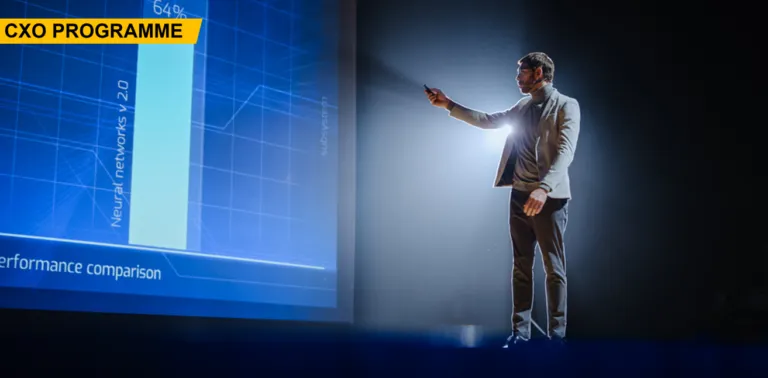What is Sustainable Leadership and Why it’s Important

In 1996, Nike found itself at the center of a global scandal when reports exposed its reliance on sweatshop labor, where workers endured abysmal wages and inhumane conditions; and decades later, Volkswagen manipulated emissions data, prioritizing market dominance over environmental responsibility. In both cases, short-term profits overshadowed long-term accountability, leading to financial losses, legal repercussions, and a shattered reputation. Examples such as these abound in our industrial history, underscoring a critical truth—leadership without sustainability goals is a liability. As climate change accelerates, with rising greenhouse gases, soaring temperatures, and ecological instability, businesses can no longer treat sustainability as an afterthought (1,2). Rather, it must be a strategic pillar embedded in governance, culture, and operations. Because, sustainable leadership ensures resilience, ethical responsibility, and long-term success. But what does it truly entail? Why is leadership important for sustainability? And why is it indispensable today? Let’s explore.
What is the Meaning of Sustainable Leadership?
Sustainable leadership is a leadership philosophy that provides tangible solutions to environmental, social, and economic challenges. It extends beyond profit-making, embedding long-term value creation that benefits not just shareholders but also employees, communities, and the planet.
In principle, this leadership paradigm emphasizes resilience, ethics, and responsibility—balancing financial growth with ecological and social considerations. Leaders who embrace sustainable leadership foster innovation, and future-proof their organizations. This results in a world where business and sustainability co-exist harmoniously.
Best Leadership Courses
What are the Elements of Sustainable Leadership?
1. Visionary Thinking and a Long-Term Mindset
Sustainable leadership is rooted in foresight, extending beyond immediate gains, considering the long-term impact of decisions on society, the environment, and future generations. In essence, it requires a commitment to progress that does not compromise the well-being of the planet or people.
2. Cross-Boundary Leadership Networks
Collaboration is at the core of sustainable leadership as it thrives on alliances that transcend industries, sectors, and geographies. It can drive solutions that address global sustainability challenges holistically by facilitating interconnected systems of knowledge and influence.
ALSO READ: Digital Leadership: Empowering General Managers in a Digital-First World
3. Thinking of the Earth as a System
Every action has a ripple effect that affects our planet. Sustainable leadership recognizes this factor and considers the planet an interconnected system where environmental, social, and economic factors are deeply entangled and embedded. It embraces solutions that regenerate resources rather than deplete them, ensuring equilibrium across ecosystems. Thus, planetary thinking figures as one of the driving principles of sustainable leadership.
4. Adaptability in a Changing Landscape
The sustainability landscape is constantly evolving, shaped by climate shifts, technological advancements, and societal expectations. Therefore, sustainable leadership must be agile by nature, embracing transformation and leveraging innovation to remain effective amid uncertainty.
5. Exercising Organization-Wide Influence
Sustainability is not confined to policies or strategies—it permeates actions, behaviors, and decision-making. Therefore, sustainable leadership must be able to influence thought patterns across the organization. It should inspire others to internalize sustainability as a guiding principle in their daily practices.
6. Ethical Thinking as a Cornerstone
Among the aspects that constitute what are the elements of sustainable leadership, ethical integrity plays a definitive role. It prioritizes fairness, responsibility, and transparency, ensuring that actions align with ethical values.
7. Innovation as a Sustainability Catalyst
Sustainable leadership theory embraces innovation as a tool for progress. It harnesses technology, creative problem-solving, and scientific advancements to develop sustainable solutions that enhance efficiency, reduce waste, and drive systemic change.
Why is Leadership Important for Sustainability?
Leaders are in a strategic position to drive sustainability. Here’s why:
- They have the power to set the sustainability agenda, ensuring that ESG (environmental, social, and governance) principles become core business objectives
- They can influence corporate culture, embedding sustainability into organizational values and daily operations
- They are in a position to align sustainability with profitability, proving that ethical business practices can enhance financial performance
- They can drive regulatory compliance, ensuring that businesses proactively adapt to environmental laws
- They can drive innovation, investing in sustainable R&D, energy efficiency, and carbon-neutral solutions
- They have the potential to scale impact, ensuring sustainability is not just a policy but a business-wide commitment
Who is an Example of a Sustainability Leader?
 Few individuals embody sustainable leadership like Kate Brandt, Google’s Chief Sustainability Officer. Before stepping into her role at Google, Kate Brandt played a pivotal part in shaping climate policies within the U.S. government. She held key positions at the Department of Energy, the Department of Defense, and the White House, where she spearheaded sustainability initiatives at a national level. Her influence reached a historic milestone in 2015, when President Obama appointed her as the nation’s first-ever Chief Sustainability Officer, entrusting her with the responsibility of overseeing sustainability efforts for the largest energy consumer in the world—the U.S. federal government (3).
Few individuals embody sustainable leadership like Kate Brandt, Google’s Chief Sustainability Officer. Before stepping into her role at Google, Kate Brandt played a pivotal part in shaping climate policies within the U.S. government. She held key positions at the Department of Energy, the Department of Defense, and the White House, where she spearheaded sustainability initiatives at a national level. Her influence reached a historic milestone in 2015, when President Obama appointed her as the nation’s first-ever Chief Sustainability Officer, entrusting her with the responsibility of overseeing sustainability efforts for the largest energy consumer in the world—the U.S. federal government (3).
Now, at Google, Brandt continues to push the boundaries of sustainability. She leads sustainability initiatives across the company’s vast infrastructure, supply chains, data centers, and hardware systems, ensuring sustainability is integrated into every facet of operations. With her as the chief sustainability officer, Google has embarked on the path of running on carbon-free energy entirely, a groundbreaking effort that aims to power all Google operations with clean energy every second of every day by 2030 (4).
While AI has often been scrutinized for its energy-intensive nature, Brandt, who is an example of a sustainability leader, actively champions its potential as a force for sustainability. Her vision serves as a testament to how even the most resource-heavy industries can evolve into sustainability pioneers, proving that innovation and environmental responsibility can, and must, coexist (5).
ALSO READ: 5 Important Reasons Why You Need Emotional Intelligence in Leadership
Sustainable Leadership in Business
So far, we have explored what sustainable leadership is. But what does it mean for businesses? Here’s how sustainability translates into corporate strategy:
1. Embedding Sustainability into Business Strategy
Sustainability cannot be an afterthought; it must be a foundational business principle. Sustainable leadership ensures that ESG priorities are integrated into corporate strategy. Thus, leaders need to thoroughly understand the importance of sustainable leadership and establish measurable objectives accordingly, aligning them with financial goals and operational processes. This includes setting clear targets for carbon reduction, resource efficiency, and ethical labor practices while ensuring these initiatives contribute to business growth.
2. Leveraging Technology for Sustainable Operations
Technology is a powerful enabler of sustainability. For instance, technologies such as data analytics, AI, and automation optimize resource utilization, improve waste management, and reduce energy consumption. Digital monitoring systems allow companies to track real-time sustainability metrics, ensuring compliance and continuous improvement. Sustainable leadership leverages innovation not just to minimize environmental harm but to create new efficiencies that drive business success.
3. Building a Sustainability-Driven Workforce
A company’s sustainability success depends on its people. Hence, sustainable leadership must nourish a corporate culture where employees understand their role in environmental and social responsibility. This means embedding sustainability training into leadership development, aligning employee incentives with sustainability goals, and ensuring that every department integrates sustainability into its decision-making framework.
4. Driving Systemic Changes Through Stakeholder Engagement
Sustainability cannot be achieved in isolation. Rather, sustainable leadership in business requires organizations to engage with all the stakeholders—including suppliers, investors, and policymakers—to drive collective impact. Thus, leaders must champion cross-sector collaboration, advocating for policies that reinforce sustainability across industries.
5. Sustainability as a Competitive Advantage
Consumers are increasingly choosing brands that align with their values, favoring companies that prioritize ESG principles (6,7). Sustainability is no longer just an ethical stance—it has become a key factor in purchasing decisions. Also, a strong commitment to sustainability can build trust, enhance brand loyalty, and differentiate a company in competitive markets. Furthermore, beyond reputation, it also influences customer retention, market positioning, and long-term growth.
Importance of Sustainable Leadership
Renowned Nobel laureate chemist Paul J. Crutzen introduced the term Anthropocene to define the current geological epoch—where human activity has become a dominant force shaping the planet(8). Fossil fuel combustion, industrial pollution, and deforestation have triggered climate shifts that threaten the very fabric of our existence.
The business world cannot operate in isolation from these realities. Every corporate action has global consequences. Whether it’s a manufacturing giant’s carbon footprint or a retailer’s supply chain ethics, sustainability is not just an environmental necessity—it’s a business imperative. Organizations that fail to embrace sustainable leadership will face regulatory penalties, reputational damage, and declining consumer trust.
How to Become a Sustainable Leader?
 Strong leadership is essential for integrating sustainability into business strategy. However, not all leaders require the same level of training. Some need to gain foundational knowledge of sustainable leadership theory, while others require advanced insights tailored to industry-specific challenges. The right program must align with an individual’s experience, role, and leadership aspirations.
Strong leadership is essential for integrating sustainability into business strategy. However, not all leaders require the same level of training. Some need to gain foundational knowledge of sustainable leadership theory, while others require advanced insights tailored to industry-specific challenges. The right program must align with an individual’s experience, role, and leadership aspirations.
Considering diverse needs, Emeritus offers multiple courses on leadership—each designed to match different expertise levels and professional requirements. Below is a brief glance at some of the top programs:
| Program Name | Institute | Difficulty Level | Ideal for | Duration | Mode of Learning |
| Strategic Marketing Leadership Program | Northwestern & Kellogg School of Management | Intermediate | Senior leaders in marketing, mid-senior managers in marketing and related functions | 30 weeks | Pre-recorded lectures+live masterclasses+office hours with program leaders |
| Senior Leadership Programme | Indian Institute of Management, Lucknow | Advanced | COOs, CFOs, CEOs, head of business units (P&L), managing directors, directors, VPs, and general/ senior managers,business leaders. | 11 months | Live online classes |
| Executive Programme in Leadership & Management | Indian Institute of Management Calcutta | Advanced | Senior professionals with over 10 years of work experience;business owners, entrepreneurs, and promoters with over 5 years of experience | 12 months | Live online classes |
ALSO READ: Leadership Trends 2025: What Aspiring Leaders Need to Know
India is rapidly recognizing the importance of sustainable leadership. The 2030 Agenda on sustainable development, adopted by the Indian government, is a testament to this growing commitment (9). Across key industries, businesses are gradually embedding sustainability into their long-term vision, proving that profitability and planetary stewardship can coexist.
For executives and emerging leaders, the time to act is now. Want to explore in detail what is the meaning of sustainable leadership and become a sustainable leader? Consider joining Emeritus’ leadership courses to gain the expertise needed to drive meaningful, sustainable transformation.
Write to us at content@emeritus.org
Sources:
- Surging Seas In a Warming World: The latest science on present-day impacts and future projections of sea-level rise┃United Nations, August 2024
- GHG emissions of all world countries┃EDGAR – Emissions Database for Global Atmospheric Research
- 40 Under 40: Kate Brandt┃Fortune
- A sustainability moonshot┃Google
- Google’s Sustainability Officer on Fighting Climate Change With Technology┃Wall Street Journal
- Consumers care about sustainability—and back it up with their wallets┃McKinsey & Company
- Consumers willing to pay 9.7% sustainability premium, even as cost-of-living and inflationary concerns weigh: PwC 2024 Voice of the Consumer Survey┃PwC
- The “Anthropocene” by Paul J. Curtzen┃Earth System Science in the Anthropocene
- Release of SDG India Index 2023-24: India Accelerates Progress towards the SDGs Despite Global Headwinds┃Government of India


































